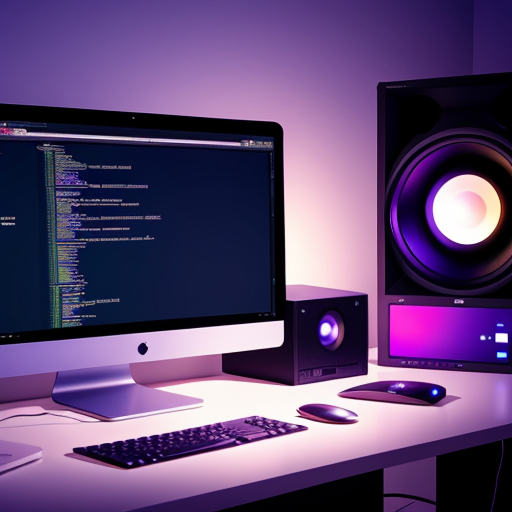As a developer, I’m often asked what it’s like to code, and the answer that always resonates with me is: coding is like art. Every line of code is a brushstroke, every function a shade of color, and every final product, a masterpiece shaped by the artist’s mind. Recently, I took on a project to build a custom WordPress portfolio plugin, and the process was, in many ways, like creating a work of art. It’s a project I’m proud of, not just because of what it does, but because of the craftsmanship involved in its creation.
What I Built: A Dynamic Portfolio Plugin
The idea behind this plugin was simple: I wanted a sleek, modern way to showcase my portfolio. But as a developer, I couldn’t settle for just another static gallery. Instead, I wanted to create something that was alive, dynamic, and could highlight my skills as both a developer and designer. The result is a custom WordPress plugin that does just that, with functionality that automates screenshots of my work, integrates animations, and displays my projects in an interactive way.
Key Features:
- Custom WordPress Plugin: I wrote this plugin from scratch to manage and display my projects directly on my WordPress site. This gave me full control over the structure, design, and functionality of the portfolio.
- GSAP Animations: I integrated the GreenSock Animation Platform (GSAP) to add smooth, modern animations to the user interface. Each portfolio item has subtle transitions, enhancing the user experience as they browse my work.
- Live Previews with a Custom-Built Modal: For each project in my portfolio, users can click a “View Project” button, which opens a live preview of the website in a modal window. I designed the modal to mimic a browser window, giving the user the feel of actually browsing the project live.
- Automated Screenshots: To keep the portfolio fresh, I integrated the ScreenshotAPI, which takes snapshots of my websites and automatically updates the portfolio with the latest screenshots. This was one of the most challenging and rewarding features to implement.
- Responsive and Accessible Design: A portfolio is only as good as its user experience, so I ensured that everything was fully responsive across all devices and adhered to accessibility standards, making sure everyone can interact with the content.
Coding is Like Art
Writing code isn’t just about solving problems — it’s about creating something that works beautifully. In the same way an artist meticulously chooses each brushstroke, a developer thoughtfully selects each line of code. Every project is a unique challenge, like a blank canvas, and each feature I build is an expression of creativity.
Here’s why coding is like art:
- Craftsmanship: Just as an artist refines their technique over time, developers hone their skills with every new project. Creating a polished, efficient codebase is a craft that requires patience and attention to detail. The better you get, the more elegant your solutions become.
- Problem-Solving: Artists solve visual and conceptual problems. Similarly, developers solve logical and functional problems. Whether it’s designing an intuitive interface or optimizing a database query, coding is about finding creative ways to overcome challenges.
- Expression: Code is more than just a technical skill — it’s a medium through which we express ideas. For me, building this portfolio plugin was about showing not only the work I’ve done but also how I can craft unique solutions for real-world problems. It’s a statement about who I am as a developer.
The Process: From Concept to Code
Here’s a glimpse into the process of creating this plugin — much like how an artist moves from sketching an outline to adding the final touches to their painting.
- Brainstorming and Conceptualizing: Before writing a single line of code, I had to decide what I wanted my portfolio to accomplish. I thought about the user experience, the visual aesthetic, and how I could use this project to demonstrate my skills.
- Writing the Foundation: Like sketching the initial outlines of a drawing, I started with the basic structure of the plugin: defining custom post types, creating the shortcode to display portfolio items, and setting up the backend functionality.
- Adding the Wow Factor: Once the structure was in place, I began adding features that would make the portfolio stand out: the GSAP animations, the browser-style modal, and the automated screenshots. This part of the process felt like adding layers of color and detail to a painting, slowly bringing it to life.
- Testing and Tweaking: No piece of art is finished without some fine-tuning. I tested the plugin on multiple devices, tweaked the animations, adjusted the layout, and ensured that everything was responsive and accessible.
- Polishing the Details: The final stage was polishing the UI and adding small, subtle details to the design. Like an artist refining their strokes, I paid attention to spacing, typography, and color schemes to make sure everything looked just right.
Conclusion: The Beauty of Code
In the end, what I’ve created isn’t just a portfolio — it’s a reflection of my passion for coding and design. Just like art, coding is a never-ending learning process, where every project teaches you something new and allows you to express yourself in different ways.
Whether you’re looking for someone to bring your vision to life or just want to talk shop about code, I’d love to connect. Building this portfolio was just one step in my journey as a developer, and I can’t wait to see where it takes me next.
The portfolio: https://kevinchamplin.com/portfolio/
Let’s create something amazing together! ????????
If you’d like to see the portfolio in action or discuss how I can help with your next project, feel free to get in touch!




